The History Of LAND Rover Defender
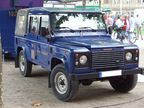
The Land Rover Defender is a British four wheel drive Off-road utility vehicle. It is the product of continued development of the original utility Land Rover Series I launched in 1948. Using the basic yet robust underpinnings of a ladder frame chassis and aluminium body, the Defender is available in a huge variety of body types (as of 2007, 20000 major body types are available from the factory, plus many more specialist versions such as fire engines, hydraulic platforms and military versions). Defenders are used for a very wide variety of purposes- from agricultural and industrial users to a large number of military customers. Defenders are also a common choice for use on expeditions and surveys throughout the world. As well as these more traditional roles, in recent years the Defender has been increasingly used by families and individuals as a private car.
The Defender was not an entirely new model at launch. It used engines and body panels carried over from the Series III Land Rover; gearbox, axles and suspension from the Range Rover.
Production of the model now known as the Defender began in 1983 as the Land Rover One Ten, a simple name which reflected the 110 inch (2.794 m) length of the wheelbase. The Land Rover Ninety, with 93inch (2.362m) wheelbase, and Land Rover 127, with 127in (3.226m) wheelbase, soon followed.
Outwardly, there is little to distinguish the post-1983 vehicles from the Series III Land Rover. A full-length bonnet, revised grille, plus the fitting of wheel arch extensions to cover wider-track axles are the most noticeable changes. Mechanically the Ninety and One Ten were a complete modernisation of the former Series platform. Specifically:
- The use of coil springs, whereas Series vehicles had leaf springs. This gave a more comfortable ride and improved axle articulation.
- A permanent four-wheel drive system as used since 1970 on the Range Rover, featuring a two-speed transfer gearbox with a lockable centre differential.
- As part of the update, a new series of progressively more powerful and more modern engines were designed, although the Series III engine line-up remained in place when the vehicles were first launched.
- The interior was modernised; a taller one-piece windscreen replaced the split-screen of the Series models.
The One Ten was launched in 1983, and the Ninety followed in 1984. From 1984, wind-up windows were fitted (Series models and very early One Tens had sliding panels), and a 2.5-litre, 68hp (51kW) diesel engine was introduced. This was based on the earlier 2.3-litre engine, but had a more modern fuel-injection system as well as increased capacity. A low compression version of the 3.5-litre V8 Range Rover engine was available too which transformed performance.
This period saw Land Rover market the utility Land Rover as a private recreational vehicle. Whilst the basic pick-up, Station Wagon and van versions were still working vehicles, the County Station Wagons were sold as multi-purpose family vehicles, featuring improved interior trim and more comfortable seats. This change was reflected in Land Rover starting what had long been common practice in the car industry - detail changes and improvements to the County model from year to year in order to attract new buyers and to encourage existing owners to trade in for a new vehicle. These changes included different exterior styling graphics and colour options, and a steady trickle of new "lifestyle" accessories that would have been unthinkable on a Land Rover a few years ago, such as radio/ cassette players, styled wheel options, headlamp wash/ wipe systems and new accessories such as surfboard carriers and bike racks. The switch from leaf- to coil spring suspension was crucial to the new models' success. It offered improved off-road ability and load capacity for traditional commercial users, whilst the improved handling and ride comfort now made the Land Rover attractive to the general public.
Note on names and badges
The Defender name wasn't adopted until 1990 as a measure to distinguish the utility Land Rover model from the Discovery and Range Rover. Between 1983 and 1990 the coil-sprung utility Land Rovers were officially known as the Land Rover Ninety or One Ten, with the number spelled out in full in advertising and in handbooks and manuals. These vehicles carried badges above the radiator grille that (rather confusingly) said Land Rover 90 or Land Rover 110, with the number rendered numerically. From late 1989, following the introduction of the Discovery, the front badge simply said 90 or 110. From 1991, when the Defender name was adopted the vehicles became the Defender 90 or the Defender 110. These carry front badges that say Defender, with a badge on the rear of the vehicle saying Defender 90 or Defender 110. Just to add to the confusion, the 127-inch (3,226mm) wheelbase available from 1985 was always marketed with the name rendered numerically (i.e. as the Land Rover 127). Following the adoption of the Defender name, it became the Defender 130, although the wheelbase remained unchanged.In the United States and Canada, the Defender was sold between 1993 (the only year 110's were sold) and 1997 (the 90 was sold between 1994 and 1997). The hood of the North American Specification , or NAS, said only 'Land Rover' - no indication of 'Defender' or '90' or '110'.
The 127 and 130
From 1985 Land Rover introduced a third wheelbase to its utility line-up, a 127-inch (3,226mm) twin-axle vehicle designed to accommodate larger, heavier loads than the One Ten. Naturally called the Land Rover 127, it was designed specifically with use by utility and electrical companies in mind, as well as military usage. In its standard form it is a five-door six-seater consisting of the front half of a One Ten Station Wagon, and the rear of a One Ten High-Capacity Pick Up (HCPU). The logic was that this allowed a workcrew and their equipment to be carried in one vehicle at the same time. The 127 could carry up to 1.4 tons payload, compared to the 1.03 tons payload of the One Ten and the 0.6 tons of the Ninety.
127s were built on a special production line, and all started life as One Ten Station Wagon chassis (the model was initially marketed as the One Ten Crew Cab, before the more logical 127 name was adopted). These were then cut in two and the 17inches (432mm) of extra chassis length welded on before the two original halves were reunited. 127s did not receive their own dedicated badging like the other two models, instead they used the same metal grille badges as used on the Series III 109 V8 models, that simply said Land-Rover.
Although the standard body-style was popular, the 127 was a popular basis for conversion to specialist uses, such as mobile workshops, ambulances, fire engines or even flatbed transports. In South Africa, the Land Rover assembly plant there offered a 127 Station Wagon with seating for 15. Land Rover also offered the 127 as a bare chassis, with just front bodywork and bulkhead, for easy conversion.
Initially held back by the low power of the Land Rover engines (other than the thirsty V8 petrol engine), the 127 benefited from the improvements to the line-up, and by 1990 was only available with the two highest power engines, the 134hp (100kW) 3.5-litre V8 petrol, and the 85hp (63kW) 2.5-litre Diesel Turbo.
Engine Development
The original One Ten of 1983 was available with the same engine line-up as the Series III vehicles it replaced, namely 2.25-litre petrol and diesel engines, and a 3.5-litre V8 petrol unit. The intention had always been to provide more powerful engines as soon as the new vehicles had found their feet and the Series III had ceased production. Indeed, in 1981 the 2.25-litre engines had been upgraded from 3- to 5-crankshaft bearings in preparation for the planned increases in capacity and power.
The 2.5-litre version of the diesel engine, producing 68hp (51kW), was introduced in both the One Ten and the newly-arrived Ninety. This was a long-stroke version of the venerable 2.25-litre unit (the new version displaced 2495cc), fitted with updated fuel injection equipment and a revised cylinder head for quieter, smoother and more efficient running. A timing belt also replaced the older engine's chain.
In 1985 the petrol units were upgraded. An enlarged 4-cylinder engine was introduced. This 83horsepower (62kW) engine shared the same block and cooling system (as well as other ancillary components) as the diesel unit. Unlike the diesel engine, this new 2.5-litre petrol engine retained the chain-driven camshaft of its 2.25-litre predecessor. At the same time, the 114hp (85kW) V8 was also made available in the Ninety- the first time a production short-wheelbase Land Rover had been given V8 power. The V8 on both models was now mated to an all-new 5-speed manual gearbox.
1986 saw an important development. For many years Land Rovers had been criticised for their low-powered engines, which, despite the recent improvements, still lagged a long way behind much of the competition. Designed to be simple and durable, the engine had worked for decades, but the venerable engines began to feel old-fashioned and underpowered in an era of high horsepower motors. Drivers were less inclined to use the gearbox to compensate for the older motor's relative lack of power. The "Diesel Turbo" engine was introduced to make up for this long-standing shortfall. The engine was essentially a lightly-turbocharged version of the existing 2.5-litre diesel, with several changes to suit the higher power output, including a re-designed crankshaft, teflon-coated pistons and nimonic steel exhaust valves to cope with the higher internal temperatures. Similarly, an 8-blade cooling fan was fitted, together with an oil cooler. The 2.5 diesel, 2.5 petrol and Diesel Turbo engines all shared the same block castings and other components such as valvegear and cooling system parts, allowing them to be built on the same production line. The Diesel Turbo produced 85hp (a 13% increase over the naturally-aspirated unit, and a 31.5%increase in torque to 150lb·ft (203N·m) at 1800rpm). This finally provided a powerful yet economical powerplant for the vehicle. Externally, turbodiesel vehicles differed from other models only by having an air intake grille in the left-hand wing to supply cool air to the turbo. The engine was only intended to be a short term solution to compete with more advanced Japanese competitors, but was quickly adopted as the standard engine for UK and European markets.
Early turbodiesel engines gained a reputation for poor reliability, with major failures to the bottom-end and cracked pistons. A revised block and improved big end bearings were introduced in 1988, and a re-designed breather system in 1989. These largely solved the engine's problems, but it remains (like many early turbodiesels) prone to failure if maintenance is neglected. Well-maintained engines are capable of long service lives in excess of 150,000 miles (240,000 kilometres). Despite its early problems, the Diesel Turbo was a popular engine choice in its time, especially since it offered improved power, torque and economy over the 2.5-litre petrol engine. Contemporary road-testers compared the engine favourably to its Japanese competitors, despite the age of the basic design. Whilst not being able to match the performance of a V8-engined Land Rover, the Diesel Turbo provided adequate performance for most commercial and private buyers and was a key aspect in Land Rover's sales revival (see below).
At the same time that the Diesel Turbo was introduced, the V8 engine was upgraded. Power was increased to 134hp (100kW), and SU carburettors replaced the Zenith models used on earlier V8s.
Sales Turnaround
This was a period of change and success for the company. The new vehicles, with their more modern engines, transmissions and interiors reversed the huge decline in sales that took place in the 1980s (a 21% fall in a single year, 1980-81). This growth was mainly in the domestic UK market and Europe; African, Australian and Middle-Eastern sales failed to recover significantly. The company itself adopted more modern practices, such as using marketing campaigns to attract new buyers who would not previously have been expected to buy a Land Rover. The operation was streamlined, with most of the satellite factories in the West Midlands that built parts for the Land Rover being closed and production brought into the Solihull factory, which was expanded.
To maximise sales in Europe, Land Rover set up the Special Vehicles division, which handled special low-number conversions and adaptations to the vehicles. The bulk of the division's work was the construction of stretched-wheelbase mobile workshops and crew carriers for British and European utility companies, often including 6-wheel-drive conversions, but more unusual projects were undertaken, such as the construction of an amphibious Land Rover Ninety used by the company as part of its sponsorship of Cowes Week from 1987-90. The Special Projects division also handled specialised military contracts, such as the building of a fleet of 127-inch (3,226mm) V8-powered Rapier missile launchers for the British Army. The Rapier system actually consisted of three Land Rovers: a 127 which carried the launching and aiming equipment, and two 110s which carried the crew and additional equipment.
The biggest change to the Land Rover came in late 1990, when it became the Land Rover Defender, instead of the Land Rover Ninety or One Ten. This was because in 1989 the company had introduced the Discovery model, requiring the original Land Rover to acquire a name. The Discovery also had a new turbodiesel engine. This was also loosely based on the existing 2.5-litre turbo unit, and was built on the same production line, but had a modern alloy cylinder head, improved turbocharging, intercooling and direct injection. It retained the block, crankshaft, main bearings, cambelt system and other ancillaries as the Diesel Turbo. The breather system included an oil separator filter to remove oil from the air in the system, thus finally solving the Diesel Turbo's main weakness of re-breathing its own sump oil. The 200Tdi as the new engine was called produced 107hp (80kW) and 188lb·ft (255N·m) of torque, which was nearly a 25% improvement on the engine it replaced (although as installed in the Defender the engine was de-tuned slightly from its original Discovery specification (111 horsepower) to suit the prolonged periods of low speed, high revving operation that Land Rovers experienced in commercial use, such as when towing heavy loads).
This engine finally allowed the Defender to cruise comfortably at high speeds, as well as tow heavy loads speedily on hills while still being economical. In theory it only replaced the older Diesel Turbo engine in the range, with the other 4-cylinder engines (and the V8 petrol engine) still being available. However, the Tdi's combination of performance and economy meant that it took the vast majority of sales. Exceptions were the British Army and some commercial operators, who continued to buy vehicles with the 2.5-litre naturally-aspirated diesel engine (in the Army's case, this was because the Tdi was unable to be fitted with a 24-volt generator). Small numbers of V8-engined Defenders were sold to users in countries with low fuel costs or who required as much power as possible (such as in Defenders used as fire engines or ambulances).
Along with the 200Tdi engine, the 127's name was changed to the Land Rover Defender 130. The wheelbase remained the same; the new figure was simply a tidying up exercise. More importantly, 130s were no longer built from "cut-and-shut" 110s, but had dedicated chassis built from scratch.
1994 saw another development of the Tdi engine, the 300Tdi. This was the same capacity, and both the Defender and the Discovery had engines in the same state of tune (111bhp, 195lb·ft), and had the same basic layout, but had over 200 changes to improve the refinement and on-road performance of the engine. However, in the process the economy of the engine was reduced slightly, as was the ability for it to be serviced by the owner.
Throughout the 1990s the vehicle attempted to climb more and more upmarket, while remaining true to its working roots. If ordered without any optional extras, the Defender was a basic working tool. If the owner so wished, any number of options and accessories could transform it into a vehicle that was perfectly acceptable as an everyday method of transport, while still retaining excellent off-road abilities. This was epitomised by limited edition vehicles, such as the SV90 in 1992 with roll-over protection cage, alloy wheels and metallic paint and the 50th Anniversary 90 in 1998 equipped with automatic transmission, air conditioning and Range Rover 4.0-litre V8 engine.
In 1998 the Defender was fitted with an all-new 2.5-litre, five-cylinder in-line turbodiesel engine, badged the Td5. The Tdi could not meet upcoming Euro III emissions regulations so the Td5 replaced the Tdi as the only available power unit. The engine used electronic control systems and produced 11hp (8kW) more than the Tdi, with improved refinement. Traditionalists were critical of the electronic systems deployed throughout the vehicle, but concerns that these would fail when used in extreme conditions were unfounded.
Another new variant was the Defender 110 Double Cab, featuring a Station Wagon style seating area, with an open pick up back. Although prototypes had been built in the Series days, it was not until the late 1990s that this popular and adaptable vehicle finally reached production.
From Spring 2007 a series of long-anticipated changes were made to the Defender, most of which were implemented to meet emissions and safety legislation. The biggest change was to the drivetrain. The Td5 engine was replaced by an engine from Ford's DuraTorq line, built in their factory in Dagenham, making the Td5 the last Land Rover engine to be built in-house at Solihull. The engine chosen was from the ZSD family, being a version of the 2.4-litre four-cylinder unit also used in the highly successful Ford Transit. The engine's lubrication and sealing system has been adapted for use in wet, dusty conditions and to maintain lubrication at extreme angles in off-road use. Re-tuning the engine means that the power level remains the same (122 horsepower), but with a lower power peak speed to provide better performance when towing and better acceleration. Torque output rose from 221lb·ft (300N·m) to 265lb·ft (359N·m) due to the fitting of a variable-geometry turbocharger. This also helps produce a much wider spread of torque than the Td5, from 1500 rpm to 2000 rpm.
The engine is mated to a new 6-speed gearbox. 1st gear is lower than the previous gearbox for better low-speed control, whilst the higher 6th gear is intended to reduce noise and fuel consumption at high speeds.
The other major changes were to the interior. The dashboard layout of the original One Ten from 1983 (which was in turn very similar to that used on the Series III from 1971) was replaced with a full-width fascia and different instrumentation. Instruments came from the Discovery 3, and some of the centre panels come from the Ford Transit. Some switchgear was carried over from the previous interior. A new heater/ ventilation system vastly improved de-misting and heater performance.
Other interior changes were to the seating layout. Legislation from the European Union outlaws the inward-facing seats used in the rear of previous Land Rover Station Wagons. The 2007 Defender replaced the 4 inward-facing seats with two forward-facing seats. This makes the Defender 90 Station Wagon a 4-seater vehicle (reduced from 6 or 7), and the Defender 110 Station Wagon a 7-seater (reduced from 9). Whilst this is a big reduction in capacity, it brings the Defender in line with its competitors which have generally used this layout for many years.
The only external changes were detail changes. The bonnet was reshaped with a bulge to allow the new engine to fit in the engine bay whilst meeting pedestrian safety rules. The new dashboard and ventilation system necessitated the removal of the distinctive air vent flaps underneath the windscreen which had been a feature of all previous Land Rover utility models. Whilst the flaps have been deleted, the bulkhead pressing remains the same, so the outlines of where the flaps would be are still present.
Now, more than ever, there is a strong division in sales pitch between the Station Wagon versions and the commercially-intended Pick-Ups and Van-bodied versions. The "XS" Station Wagon was introduced in 2002 as a top-spec level and the "County" package could be applied to every model in the line-up. XS models come with many "luxury" features, such as heated windscreen, heated seats, air conditioning, ABS and leather seats. Popular with buyers in the UK and other developed countries, who either used the vehicle for on-road duties such as towing or people-moving, or simply as an interesting and fashionable alternative to an estate car.
At the other extreme, basic models were still popular with farmers, industrial and commercial users, as well as the emergency services. It finds willing buyers in over 140 countries. Land Rover still provides a staggering range of special conversions such as hydraulic platforms, fire engines, mobile workshops, ambulances and breakdown recovery trucks. The 130 remains available with the 6-seater HCPU bodystyle as standard.
Anachronism
The Defender is still largely hand assembled, and unlike most modern cars and trucks, all the major body panels and sub-assemblies simply bolt together. A Defender can literally be broken down to its chassis with simple hand tools — there is no unibody structure. This is actually an advantage when used extensively for off road travel — unibody vehicles can weaken over time, but there are no such stress points on a Defender. This feature allowed Land Rover vehicles to be shipped anywhere in the world as "complete knock down" (CKD) kits, but has become a liability because of the high cost of labour in the UK where the vehicles are primarily manufactured today.
Both enthusiasts and commercial users appreciate the bolt-together construction of the vehicle, for it not only means that modifications and accessories are easy to fit, but dented or damaged panels can easily be replaced. It also means that the bodywork of the vehicle gives limited structural strength (it can be completely removed, leaving just the chassis and bulkhead/ firewall if needed). This has its advantages in that modifications, damage or corrosion in the bodywork cannot compromise the vehicle's strength, but also means that the upper bodywork offers little protection in the event of the vehicle rolling over. The simple construction of the vehicles has another advantage in that given a basic set of spanners, an individual vehicle can be switched between many of the various body styles available. For example, it is not uncommon for enthusiasts to fit a "Soft Top" canvas hood during the summer months, switching to an aluminium panel "Hard Top" van-back during the winter. Only long-wheelbase Station Wagons cannot be changed to other body types because of their unique five-door arrangement, the lack of any lateral interior bulkheads and a differently-shaped chassis to accommodate the central row of seats. Whilst these procedures could in theory still be carried out on even the latest vehicles, the amount of interior trim, panelling and electrical wiring carried in the roof and side panels of a more modern Land Rover means that such swapping is not as quick or practical as it once was.
A single link between the Series 1 (1948) and 2009 Defender remains; the swivel housing filler plug is the same part and interchangeable.
Main article: Land Rover AbilitiesReplacing the Defender with a new model has been in the planning stages for many years. The design is over 20 years old in its current form and, in some ways, directly evolved and updated from the Land Rovers of the 1940s.
New methods of building the Defender have made the model profitable again (since the 1990s, the hand-built vehicle had been made at a loss), so its replacement has been less of a priority. Total replacement will be needed by 2010, when new regulations regarding crash safety for pedestrians will render the current design obsolete.
At present, the Defender does not reach the safety requirement for the USA, and only small batches of specially modified (and very expensive) vehicles have been sold there in the past. A replacement vehicle will almost certainly be designed to be legal in America.
Land Rover Defender vehicles have been used extensively by many of the world's militaries, including the US in some limited capacity, following experience with the vehicle during the first Gulf War, where US forces found the British Army's vehicles to be more capable and better suited to operation in urban areas and for air-lifting than the Humvee. The British Army has used Land Rovers since the 1950s, as have many countries in the Commonwealth of Nations. The British Army replaced its Series III fleet with One Tens in 1985, with a smaller fleet of Nineties following in 1986. Both used the 2.5-litre naturally-aspirated diesel engine. These older vehicles are reaching the end of their service lives, with many being sold onto the civilian market from the late 1990s.
In 1994 Land Rover created the Defender XD (XD= eXtra Duty) to replace and complement these vehicles. Powered by 300Tdi engines, the XD has a much stronger chassis, with fibre webbing around the welded joints in the chassis and around stress points to massively increase load capacity. The XD was available both in Defender 90 and 110 forms, and was developed under the name "Project Wolf". British Army "Wolves" are usually 110-inch (2,794mm) Soft or Hard Tops, and are used for patrol, communications and supply duties. 90XDs are less common, but are generally ordered as Soft Top or Hard Top vehicles for light liaison and communications. Short-wheelbase vehicles lack the load capacity needed by modern armies, and the increased power of heavy-lift helicopters has made the larger 110s easily air-transportable- a historic advantage of the smaller, lighter 90.
Land Rover always offered its "Core" military Defenders with the 300Tdi engine rather than the more powerful but more complicated Td5 engine offered in civilian vehicles. Before the 300Tdi engine was introduced, military Land Rovers were offered with 2.5-litre petrol and diesel engines, as well as the 3.5-litre V8 petrol. Although trials with the Td5 engine proved it to be reliable in battlefield conditions, it was decided that servicing and repairing its electronic control systems should they fail was too complicated and reliant on having diagnostic computers available. Land Rover were also unable to guarantee they could make the Td5 resistant to electro-magnetic interference. The Australian Army also tested the Td5 and found it to be reliable, but was concerned that the extra performance and speed that the engine gave would result in more accidents and vehicle damage on rough tracks when driven by inexperienced drivers, so opted for the older engine as well.
The British police have used Land Rovers (including the Defender) in their service for many years, they are supplied with the entire range from Land Rover itself.
In 2004 a fleet of 12 Long wheelbase 110 Td5 Land Rovers were produced for the central German Government, varying between 110 Vans, 110 Hi-capacity pick-ups and 110 Station wagons. The German Government did not renew the supply contract after 2006 instead turning to Mercedes for their logistics fleet.
Vehicles produced for the German Government order were produced in metallic grey with white roofs. The electrical installation on these vehicles was a special order and kept "luxury" fittings and fixtures to a bare minimum. Four FFR equipped vehicles were produced to facilitate the VHF radios in service at that time with the German Government and Police authorities. Following the change-over to the Mercedes contract, the German Central Government sold their Td5 fleet.
With 300Tdi production stopping in 2006, Land Rover is currently gearing up production of a military version of the 4-cylinder DuraTorq engine that is also used as a replacement for the Td5 in civilian vehicles.
The British Army's Land Rovers have been the subject of much criticism following recent operations in Iraq and Afghanistan. The majority of British Service Land Rovers carry no armour-plating and the composite armoured SNATCH Land Rover (originally designed to withstand small arms fire and hand-launched projectiles as experienced in Northern Ireland) is not immune to the larger roadside bomb and rocket attacks. Some have called for British troops to be equipped with Humvees, or other such vehicles. However, similar criticisms have been levelled at the American vehicle. Other proposals include the South African made RG-31 or similar larger and more heavily armoured trucks or armoured vehicles that provide greater protection.
There have been many rumours about a replacement vehicle type. This is most likely the larger, higher-capacity 4x4 or 6x6 Pinzgauer forward-control vehicle similar to the now disused Land Rover 101 Forward Control, given that the current Land Rover design is also reaching its weight limits due to the increasing amounts of communications and weapons gear used by modern patrol forces.
In recent years Land Rover has occasionally produced Special Editions of the Defender. These have usually been little more than a vehicle being fitted with certain option packs and equipment, although more bespoke Editions have been produced. Mostly they have been aimed at the more lucrative 'lifestyle' market than the Defender's usual commercial and off-road markets.
In 1992 the first Special Edition Land Rover Defender was produced. Called the 90SV (SV stood for 'Special Vehicles', as all the vehicles were produced by Land Rover's Special Vehicle Operations department), they were painted turquoise and were fitted with a black canvas Soft Top with standard door tops. Alloy wheels were also fitted, together with rear disc brakes (at that time a first for a Land Rover). Despite the vehicle's sporty looks, it used the standard 200Tdi turbodiesel engine. Only 90 were made for the UK market.
For Land Rover's 50th anniversary in 1998 two special editions were built. The first was the Defender 50th which was essentially a NAS (North American Spec) Defender 90 Station Wagon. It was powered by a 190 hp 4.0-litre V8 petrol engine and was the first Land Rover outside North America to be fitted with an automatic transmission. Air conditioning made them very comfortable vehicles too. For the UK and Europe they were painted Atlantis Blue, a dark green/ blue flip-flop colour and had a Safety Devices roll-over protection cage for the front seat occupants. In total 1071 50th Anniversary Defenders were built; 385 for the UK home market, the rest for Japan, Europe and Middle East.
The second 1998 Special Edition was the 'Heritage', intended to hark back to the early days of Land Rover in the 1940s. Available in 90 or 110 Station Wagon form, the Heritage was only available in the two original colours offered by the company - the dark Bronze Green or the light pastel Atlantic Green. A metal mesh-effect front grille, body-coloured alloy wheels and wing mirrors and silver-painted door and windscreen hinges were all employed to make the Heritage look similar to the original Series I of 1948. Inside special instruments were used, with black-on-beige displays. The powertrain was the standard Td5 diesel engine and 4-wheel-drive transmission.
Possibly the best known Special Edition was the Tomb Raider of 2000, built to commemorate Land Rover's role in the first film of that franchise. The Tomb Raider was designed to look like an off-road expedition vehicle. Painted dark metallic grey with special badging and details, the Tomb Raiders came equipped with a roof rack, additional spot lights, winch, bull-bar and snorkel. They were available either as a 90 Station Wagon or a 110 Double Cab, with standard Td5 engines.
Following the first Land Rover G4 Challenge in 2003, G4-Edition Defenders became available. As well as the distinctive Tangiers Orange colour of the competition vehicles, yellow and black versions were also produced. Defender 90 and 110 Station Wagon versions were available, with front A-Bar, roll-cage, side-steps and front spotlights as standard, as well as G4 badging.
Since then, Land Rover have produced less extravagant Special Editions. The Defender Black was a 90 or 110 County Station Wagon with metallic black paint, roll cage and dark-tinted rear windows. The Defender Silver was a 110 County Station Wagon with silver metallic paint, front A-bar and spotlights, metal wing-protector plates and winch. The 1999 X-Tech was aimed at the commercial market, being a metallic silver 90 Hard Top fitted with County-style seats, alloy wheels and Alpine window lights. The second model year edition in 2003 was better equipped with wing protector plates and air conditioning.
The Defender in the USA
In 1993 Land Rover launched the Defender in the North American (i.e. the United States and Canada) market. Although the Range Rover had been sold there since 1987, this was the first time utility Land Rovers had been sold since 1974. To comply with the strict United States Department of Transportation regulations, ranging from crash safety to lighting, as well as the very different requirements of American buyers, the North American Specification (NAS) Defenders were extensively modified. The initial export batch was 525 Defender 110 County Station Wagons. 500 to the United States and 25 to Canada. They were fitted with the 3.9-litre V8 petrol engine and 5-speed manual transmission. All the vehicles were white (except one specifically painted black for Ralph Lauren). They sported full external roll-cages and larger side-indicator and tail-lights. All were equipped with the factory-fitted air conditioning system.
This initial batch sold quickly, and for the 1994 and 1995 model year Land Rover offered the Defender 90, fitted with a 3.9-litre V8 engine and a manual transmission which was clearly intended to compete with the Jeep Wrangler. Initially, the Defender 90 was only available as a soft-top, but later version was offered with a unique, removable, fibre-glass roof panel or regular Station Wagon hard-top.
In the final year of US production the engine was improved, designated 4.0 and mated to a 4 speed automatic transmission. In 1998 regulations changed to require the fitment of airbags for both front seat passengers in all vehicles, as well as side door impact requirements. The Defender could not be fitted with these without major modifications, which given the small numbers of NAS vehicles sold in relation to Land Rover's global sales, were not economically viable. Land Rover retired its utility vehicles at the end of 1997 to focus on its more upmarket Discovery and Range Rover models, as well as the newly-launched Freelander.
The Land Rover in Australia
Australia has always been an important export market for Land Rovers of all sorts, but especially the utility models. In the 1950s and 60s Land Rovers were key vehicles in the building of the Snowy Mountains Scheme, a role that saw them achieve iconic status in the country.
In 2003 Land Rover withdrew the Defender 90 from the Australian market due to unsupportable low sales. It continues to offer the Defender 110 and 130, which have actually seen a small sales increase in recent years, although Land Rover still trails the Japanese companies by a long way.
Foreign-built versions
Defenders, derivatives and clones have been built by a number of manufacturers including Santana Motors in Spain, Morattab in Iran, Karmann in Brazil and Otokar in Turkey. Assembly also occurs in Pakistan, Malaysia and South Africa.
From Wikipedia, the free encyclopedia
More About LAND Rover Defender
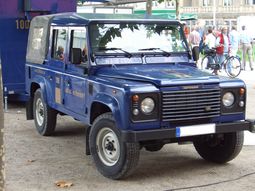
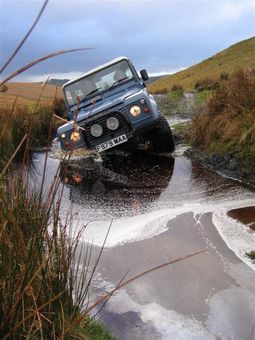
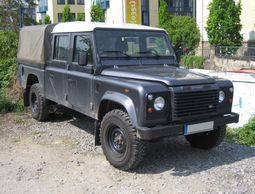
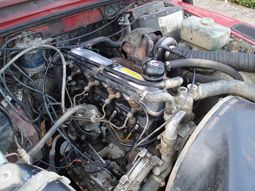
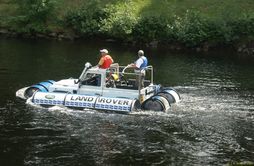
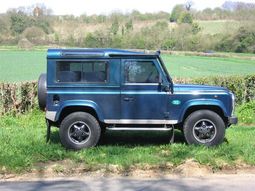
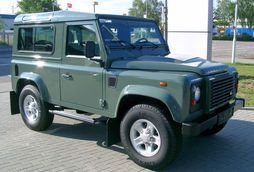
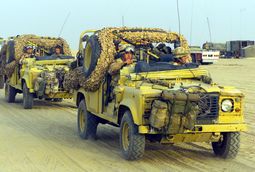
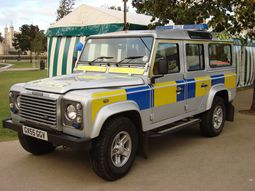
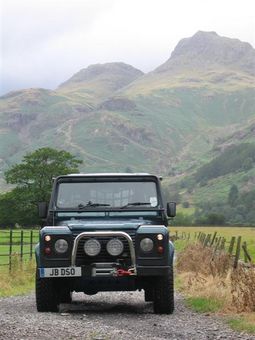
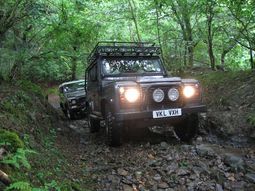
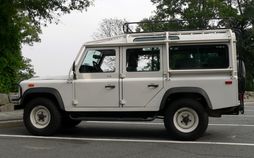
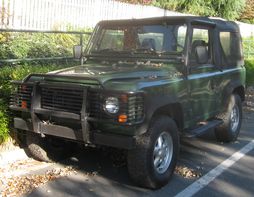
|